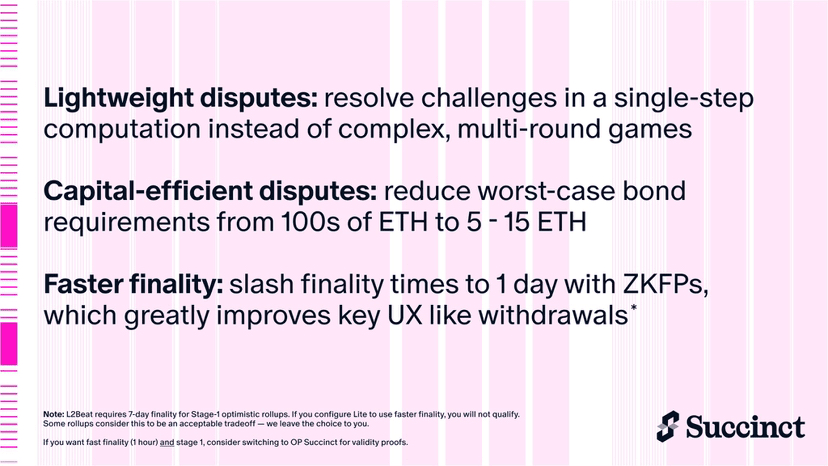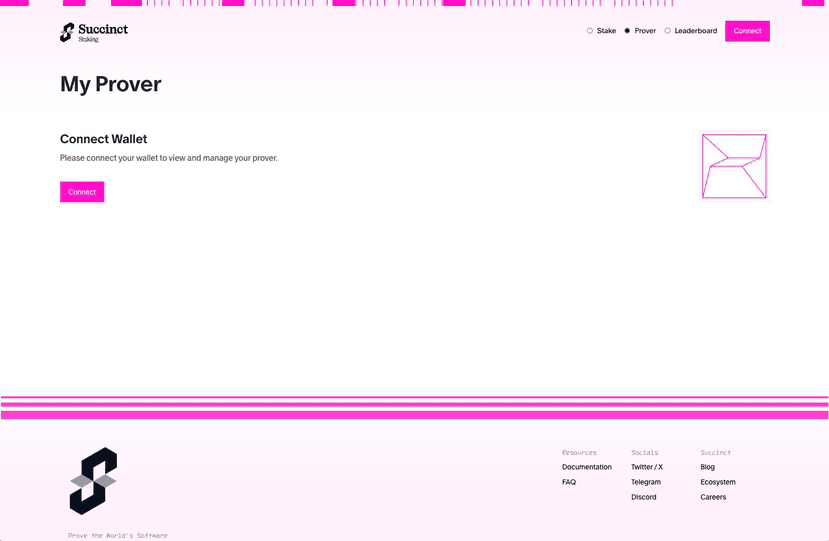Why is this project so favored by large investors?
1. Why is Prove worth paying attention to?
In the past two years, zero-knowledge proofs (ZKP) have become a hot topic in the blockchain field. Many people's first reaction is ZK Rollup and scaling, but there is a more critical use: verifying data across different chains.
This is what Succinct aims to do, and it is also the source of value for the Prove token. It represents not just a protocol but a 'piece' that the industry is currently missing:
Can data be safely shared across chains?
Can applications verify the state of other chains?
Can users safely access multi-chain resources without using centralized bridges?
Succinct, behind Prove, aims to solve these issues.
2. What is Succinct doing?
Unlike most ZK projects, Succinct does not focus on scaling a single chain but aims to turn ZK technology into a universal service layer.
Its goal is:
Allow data from different chains like Ethereum, Celestia, Solana to be mutually recognized;
Providing developers with a set of 'out-of-the-box' verification APIs;
Ensure security through decentralized verification nodes.
A simple real-world scenario: If a lending protocol wants to use data from an external oracle, it previously required complex bridges and intermediaries. Now, with Succinct, a zero-knowledge proof can be generated, allowing another chain to verify directly.
This is why Succinct is positioned more as 'cross-chain infrastructure' rather than focusing on TPS scaling.
3. The role of the Prove token
In this network, Prove ($PROVE) is the core driver:
Nodes must stake PROVE to participate, ensuring they do not act maliciously;
Developers must use PROVE to pay for service fees;
Users and the community can participate in governance through PROVE, deciding which chains to prioritize and which functions to update;
Validators will use PROVE as rewards to maintain the entire network.
In other words, the value of Prove is entirely tied to the usage rate and ecological expansion of Succinct.
4. Industry significance: Why is this important?
Currently, cross-chain is still a major challenge. Many rely on centralized bridges, but these bridges have been hacked too many times, with security incidents starting in the tens of millions of dollars.
If Succinct can truly run its zero-knowledge cross-chain verification:
Enhancing security: no longer relying on a few signers, but on pure mathematical proofs;
Efficiency improvement: cross-chain verification is almost completed in seconds, reducing latency;
More openness: any chain can quickly connect without needing to separately connect multiple bridges.
This is beneficial for the entire industry, not just DeFi; NFTs, gaming, and public chain ecosystems will also benefit.
5. Ecological cooperation and layout
Succinct is already connecting with some major ecosystems:
Infrastructure projects of Ethereum;
Modular chains like Celestia, Polygon;
In the future, it may connect with Solana and Cosmos ecosystems.
The significance of these collaborations lies in: it is not a single-point breakthrough but a multi-chain simultaneous rollout.
As more protocols use the verification provided by Succinct, the demand for Prove will continue to grow.
6. Competitive environment
The ZK field is not short of players; Polygon zkEVM, StarkWare, and zkSync are all strong in their own right. However, compared to Prove, they are mostly focused on solving 'scaling'.
The difference with Prove is:
It doesn't focus on TPS, but on 'cross-chain verification';
It is not an attachment to a single public chain but a universal layer;
It has a more foundational positioning, belonging to the role of 'making clothes for others'.
This positioning has both benefits and challenges:
Benefits: Once popularized, applications will be widespread and demand stable;
Challenge: Not directly facing end users, growth must rely on ecological cooperation.
7. Some risks
No matter how good Prove is, there are several potential risks to consider:
1. Difficulty of technical realization: Although ZKP is mature, universal cross-chain verification involves performance and compatibility, and it's not something that can be accomplished immediately;
2. Competitive risk: In the future, if projects like EigenLayer enter cross-chain verification, they may capture part of the market;
3. Token value realization issue: Prove, as a payment and staking tool, needs enough developers to use it. In the short term, there may be a situation where 'the application isn't running yet, but the token is already speculated'.
8. How will it develop in the future?
In the long run, if Succinct succeeds, Prove may become one of the most practically valuable tokens in the ZK track. Unlike some projects that rely on conceptual hype, it genuinely undertakes the essential task of 'cross-chain verification'.
Possible future directions:
More public chains join, forming a cross-chain data sharing network;
It can be implemented in DeFi, such as multi-chain lending and cross-chain stablecoins;
Become a necessary tool for institutions entering the market, ensuring their funds are safe and compliant.
Summary
Prove represents the zero-knowledge cross-chain verification infrastructure of Succinct. Its value lies not in short-term speculation, but in long-term usage rates and ecological realization.
From the user's perspective, there are two focuses:
Can it really be integrated by more applications?
Can the PROVE token model sustainably provide enough motivation for validators and developers?
If these two points are successful, Prove will be a relatively stable choice in the ZK track; if they fail, the token value may likely remain in the speculative stage.
